1. Facilities
b. Camera and Detectors
ii. Optical Response Calibration Data
Here are given laboratory measurements of the various transmission, reflection, and response data needed to calculate the absolute response of the 2MASS cameras as a function of wavelength µ.
-
The layout of the camera is shown in
Figure 1, with J, above, H, below, Ks, straight through.
After the two reflections in the telescope,
the first camera element,
proceeding from right to left, is the dewar window, followed by
a field stop and the first of the seven lenses.
Corresponding lenses are identical among the three cameras.
Following the first lens (the only one common to all cameras) are the two
dichroic mirrors, first J and then H.
The straight-through light path leads to the Ks camera, the upper
path to the J camera, and the lower one to H.
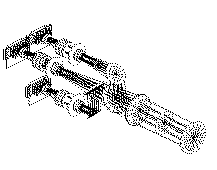
Figure 1 -
Figure 2 shows the telescope
mirror reflectivity M(µ).
This is for a single reflection of the two in the telescopes, so it must
be squared for the total.
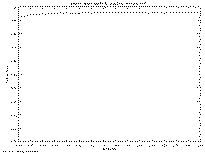
Figure 2 Main Telescope Mirror Reflectivity Data Table
-
Figure 3 shows the
dewar window transmission D(µ).
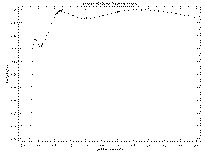
Figure 3 -
Figure 4 shows the
camera lens coatings L(µ).
The factor L(µ) is for each of the seven lens
elements, in each camera lightpath.
The total transmission for all lenses combined is over
80% (ie, 0.977 approximately),
across each of the three camera bands.
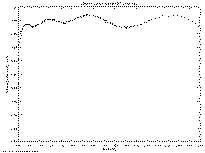
Figure 4 J Camera
Besides telescope mirrors, dewar transmission, and lens coatings, the J-band IR must be reflected by the J dichroic mirror, pass the J filter, and register in the J array:
-
Figure 5 shows the
J dichroic reflectivity Jdr(µ).
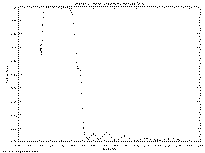
Figure 5 -
Figure 6 shows the
J filter transmission Jf(µ)
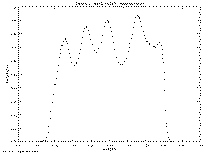
Figure 6 H Camera
Besides telescope mirrors, dewar transmission, and lens coatings, the H-band IR must be transmitted by the J-band dichroic mirror, be reflected by the H dichroic mirror, pass the H filter, and register in the H array:
-
Figure 7 shows the
J dichroic transmission Jdt(µ).
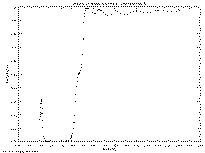
Figure 7 -
Figure 8 shows the
H dichroic reflectivity Hdr(µ)
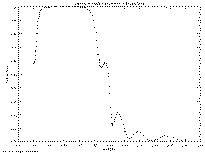
Figure 8 -
Figure 9 shows the
H filter transmission Hf(µ).
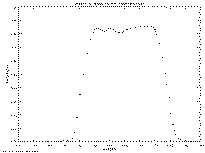
Figure 9 H-band Filter Transmission Data Table
Ks Camera
Besides telescope mirrors, dewar transmission, and lens coatings, the Ks-band IR must be transmitted by the J-band and H-band dichroic mirrors, pass through the Ks filter, and register in the Ks array:
-
J dichroic transmission Jdt(µ)
See above for this information, in H-band camera section. - Figure 10 shows the H dichroic transmission Hdt(µ)
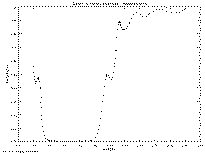
Figure 10 - Figure 11 shows the Ks filter transmission Ksf(µ)
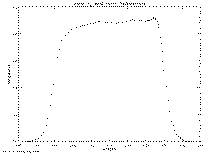
Figure 11 Ks Filter Transmission Data Table
Detectors
NICMOS3 detector array quantum efficiency Dq(µ)
Figure 12 shows a representative NICMOS3 array similar to those used in the 2MASS cameras.
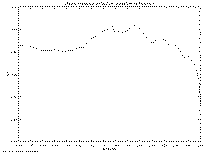
Figure 12 NICMOS3 Detector Array Quantum Efficiency Data Table
Total System Response
The following curves are all normalized to unity at the peak.
J-Band Total Response RJ(µ)
Figure 13 shows the product of all the J-band factors, including representative atmospheric transmission at the observatory sites. The rapidly-varying structure is mostly due to atmospheric absorption lines and bands, as can be seen in the atmospheric curve below.
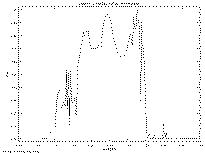
Figure 13 J-Band Total Response Data Table
Figure 14 shows the H-Band Total Response RH(µ), which is the product of all the H-band factors, including representative atmospheric transmission at the observatory sites.
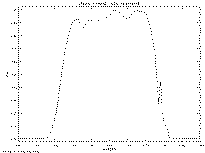
Figure 14 H-Band Total Response Data Table
Figure 15 shows the Ks-Band Total Response RK(µ), which is the product of all the Ks-band factors, including representative atmospheric transmission at the observatory sites.
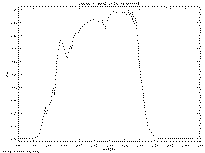
Figure 15 Ks-Band Total Response Data Table
Atmospheric Effects:
Effect of Atmospheric Water on J-Band Response.
The red edge of the J-band, as defined by the 2MASS filters, is somewhat sensitive to the amount of precipitable water in the atmosphere. Figure 16 illustrates the magnitude of the effect for 0.5 mm and 5.0 mm of water vapor, as computed by the ATRAN code, and an atmospheric model generated by the PLEXUS code, which incorporates also aerosols and particulates appropriate to the sites.
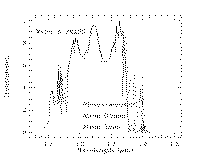
Figure 16 We thank Martin Cohen for providing us with the NICMOS3 data (originally from the manufacturer Rockwell, as obtained by Leslie Hunt), the atmospheric models, and the resulting total response curves.
- Figure 10 shows the H dichroic transmission Hdt(µ)
[Last Updated: 2000 June 27 by W. Wheaton. Modified 2000 Sep 13 by S. Van Dyk.]
Return to Section III.1b.